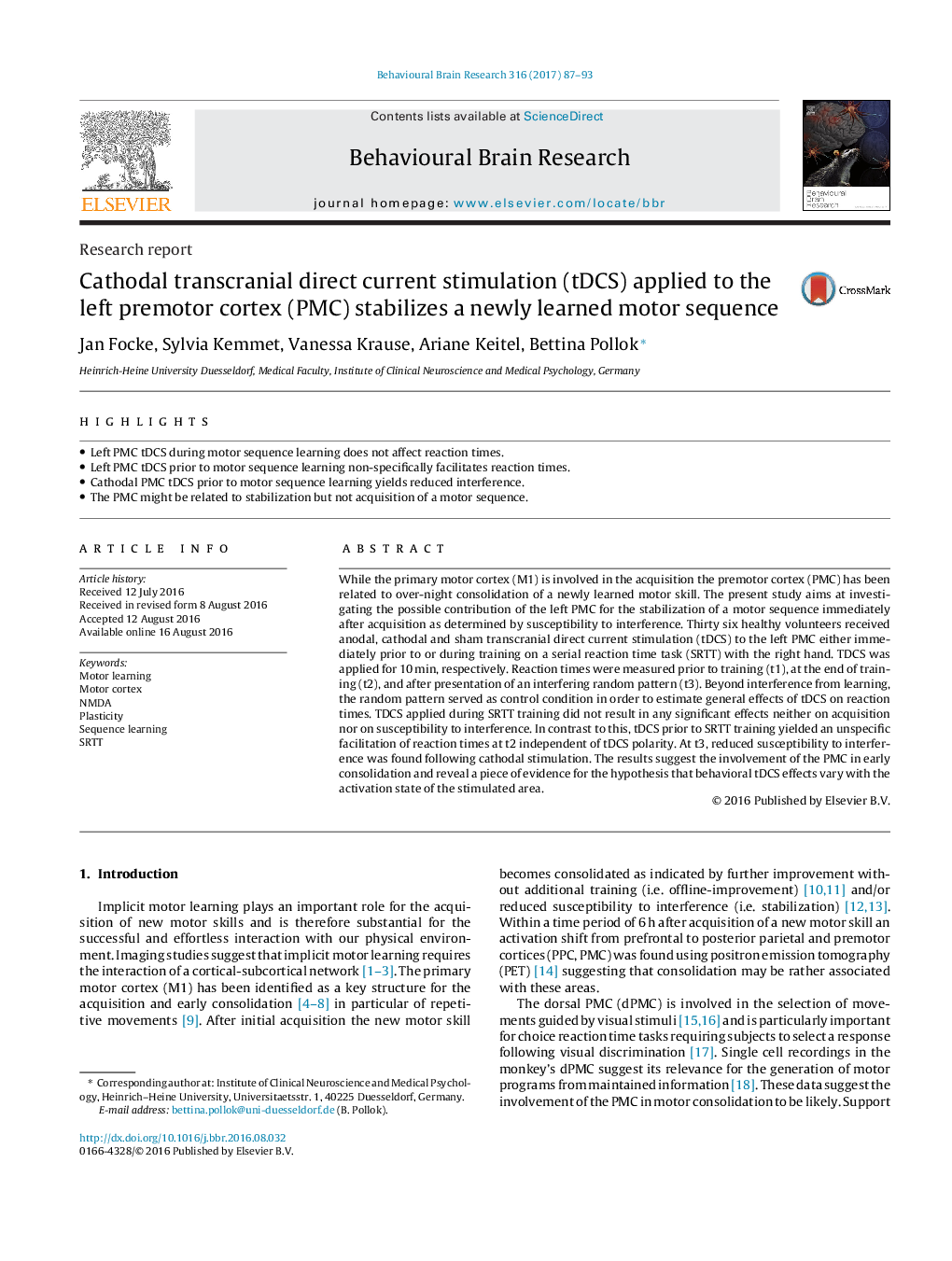| کد مقاله | کد نشریه | سال انتشار | مقاله انگلیسی | نسخه تمام متن |
|---|---|---|---|---|
| 4312002 | 1612917 | 2017 | 7 صفحه PDF | دانلود رایگان |
• Left PMC tDCS during motor sequence learning does not affect reaction times.
• Left PMC tDCS prior to motor sequence learning non-specifically facilitates reaction times.
• Cathodal PMC tDCS prior to motor sequence learning yields reduced interference.
• The PMC might be related to stabilization but not acquisition of a motor sequence.
While the primary motor cortex (M1) is involved in the acquisition the premotor cortex (PMC) has been related to over-night consolidation of a newly learned motor skill. The present study aims at investigating the possible contribution of the left PMC for the stabilization of a motor sequence immediately after acquisition as determined by susceptibility to interference. Thirty six healthy volunteers received anodal, cathodal and sham transcranial direct current stimulation (tDCS) to the left PMC either immediately prior to or during training on a serial reaction time task (SRTT) with the right hand. TDCS was applied for 10 min, respectively. Reaction times were measured prior to training (t1), at the end of training (t2), and after presentation of an interfering random pattern (t3). Beyond interference from learning, the random pattern served as control condition in order to estimate general effects of tDCS on reaction times. TDCS applied during SRTT training did not result in any significant effects neither on acquisition nor on susceptibility to interference. In contrast to this, tDCS prior to SRTT training yielded an unspecific facilitation of reaction times at t2 independent of tDCS polarity. At t3, reduced susceptibility to interference was found following cathodal stimulation. The results suggest the involvement of the PMC in early consolidation and reveal a piece of evidence for the hypothesis that behavioral tDCS effects vary with the activation state of the stimulated area.
Journal: Behavioural Brain Research SreeTestContent1 - Volume 316, 1 January 2017, Pages 87–93
